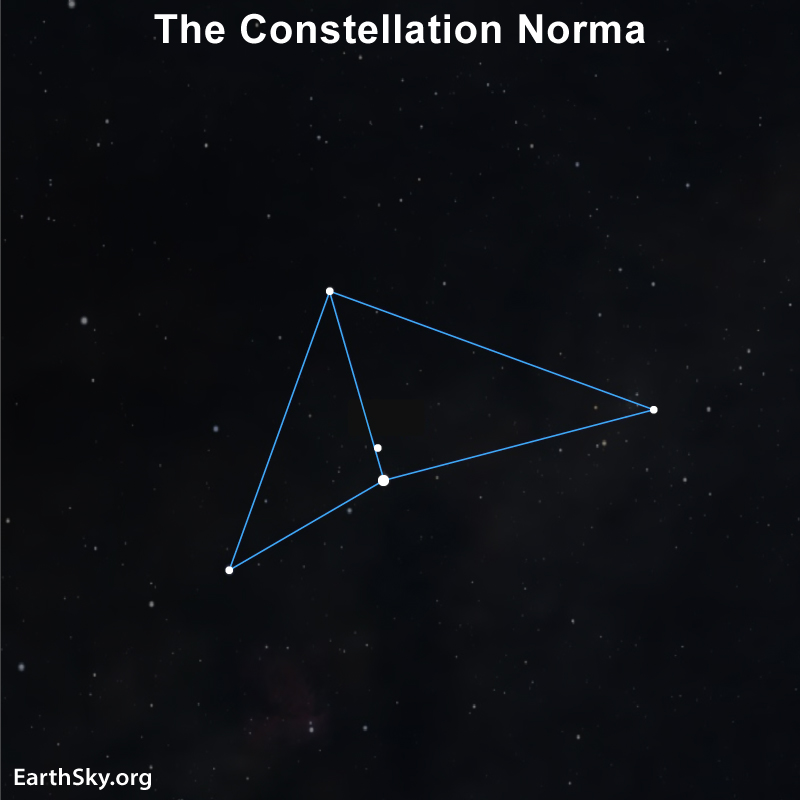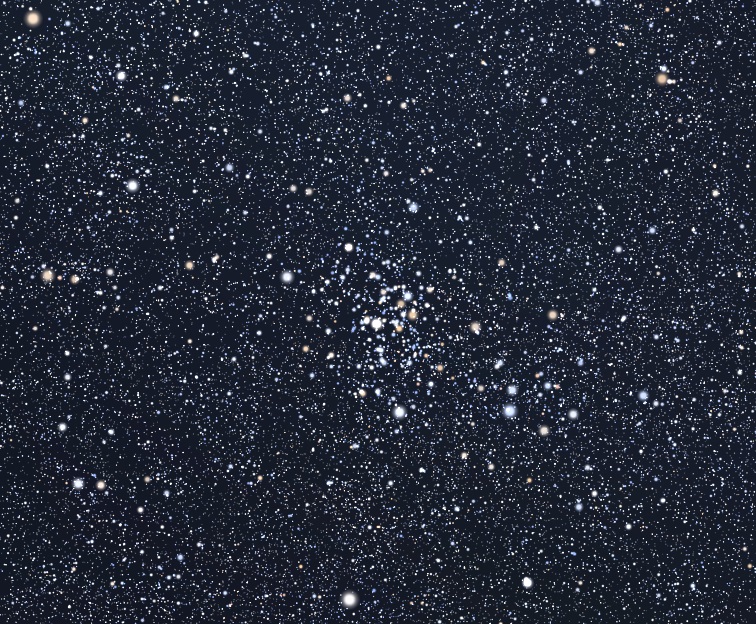Norma, home to the Great Attractor

The constellation Norma is an unusual name for a constellation. The 18th-century astronomer Nicolas-Louis de Lacaille named this constellation, along with 13 other constellations in the Southern Hemisphere. Generally, Lacaille named constellations after scientific instruments. Norma is Latin for normal, and it’s supposed to represent a carpenter’s square or level. Plus, it’s also home to a giant collection of galaxies, which is pulling in all the surrounding galaxy clusters, including ours.
Also, Norma is home to the galaxy cluster Abell 3627, one of the most massive galaxy clusters known. Abell 3627 also goes by the name of the Norma Cluster. This giant galaxy cluster resides near the center of the Great Attractor, a well of gravity that is pulling in other galaxy clusters. This includies our Local Group, the Virgo Supercluster and the Hydra-Centaurus Supercluster. Indeed, the Great Attractor covers such a large expanse that it spans Norma plus the neighboring constellation Triangulum Australe, the Southern Triangle.
Even so, the Norma Cluster is difficult to observe because it lies behind the plane of the Milky Way galaxy, which obscures our view.
How to find Norma
Norma is south of the ecliptic. With this in mind, it is best viewed from the Southern Hemisphere or from the state of Florida southward. The constellation Norma in visible in the fall from the Southern Hemisphere or spring in the lower latitudes of the Northern Hemisphere. Norma sits beside Lupus and south of Scorpius. The stars of Norma are dim, so your best bet is to first trace out the form of the Scorpion and then look for the dark patch of sky to the south.

Stars and deep-sky objects
The region of Norma is truly dark. Stargazers in large cities will probably see nothing but a grayish black patch of sky here. All of the stars are 4th magnitude and dimmer. The brightest star in Norma is magnitude 4.02 Gamma Normae, a double star that is hardly distinguishable from its neighbors. Gamma Normae lies 127 light-years away.
Norma’s location on the Milky Way means that it holds a number of deep-sky observing targets. The star cluster NGC 6067 is magnitude 5.6 and lies 1/2 degree north of Kappa Normae, a magnitude 4.94 star. NGC 6087 is a magnitude 5.4 open cluster almost 4 degrees below NGC 6067. If you scan the region of Norma in binoculars, you can see at least 8 open clusters.

Bottom line: The constellation Norma represents a right angle. It lies in southern skies and is home to the Norma Cluster and the Great Attractor.
Read More: Norma, home to the Great Attractor

